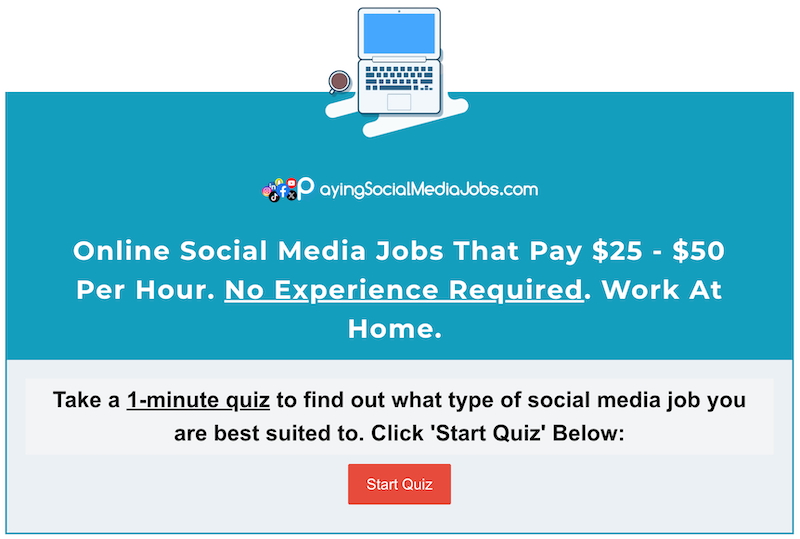When you do not make sure how to deal with a colleague who behaves unfairly, there are some things that you can do to deal with workplace harassment.
Unfortunately, workplace harassment is a common problem. It is indiscriminate, and anyone can suffer. While most people are guilty of this inappropriate behavior, are maliciously motivated, there are some who are ignorant that their behavior is oppressed by workplace.
Workplace harassment affects everyone: men, women and LGBT people can suffer. When someone suffers, it is necessary to know that to ensure that it never happens again.
When your workplace does not feel safe
It can be quite difficult to pull yourself to work every day. Let’s face it, no matter how much you compete to love your job, there are days when it was thought to face your tasks that he feels like a Hercules attempt. But what if, at the top of the normal working blues, is an additional layer of dreaded? It comes not only by drained workload, but from the unnecessary possibility of workplace harassment.
Workplace oppression, as defined by the US Equal Employment Opportunities Commission, includes unwanted conduct based on breed, color, religion, gender, national origin, age, disability or genetic information.
This behavior becomes illegal when tolerating aggressive conduct becomes a state of constant employment or when conduct is serious or enough to create a work environment that a proper person will consider scaring, hostile or derogatory.
The effect of workplace harassment is deep and far -reaching, which affects all gender and sexual inclination staff. It is a misconception that harassment occurs only for some groups of people. The truth is that, this can happen to someone, whether their gender identity or sexual orientation.
The harassment does not discriminate – but it hurts deeply. Such an environment can cause excess of negative consequences, not only for a person who experiences it, but also for the entire workplace culture.
Hunters of workplace harassment often report, feeling isolated, stressed and powerless. Their work performance may suffer, they can start taking more sick days, or in the worst cases, they may feel forced to quit their job completely.
Workplace harassment forms
Workplace harassment involves many behavior, while they can look harmless or fickle to something, may be deeply disturbed and unacceptable for others.
Remember that you can consider casual or friendly with close friends, a professional can be completely inappropriate in settings, especially when they include colleagues who come from different backgrounds and have different rest levels.
The workplace may be greater than harassment, such as unwanted physical contact, or it may be manifested in more subtle ways through oral or non -objective communication. Here are some examples given
1. Unnecessary touch
Even if you are closed with your colleague, reserve it to your personal gate-tors. Others may misinterpret those gestures, as well as it looks unprofessional.
This includes comments that sexually objects or demin the other person. This can be an insult on a body part or suggests that the person is rich in sexual act.
3. Gossip
Sometimes, the comments are not directed to the target person, but shared with other colleagues. In this way, the thought spreads in the workplace and greatly increases the problem of harassment.
4. Cyber sexual harassment
This picture: You open your work on an email or a professional network, and this is the message that makes you uncomfortable. This can be strangely individual observations, highly aggressive language, lump sum to be invasive jokes or memes.
It is never only inappropriate jokes, but a pattern of digital communication that crosses the line. With a lot of life of our work being online, such items are popping more than ever. It is as if some people fall behind a screen and forget that there is a real person on the other side.
5. Other forms of non-behavior such as Ogling, staring and indecent performance
Do we say more?
6. Naughty
7. Vengeance
It is particularly related to workplace harassment as it attacks someone’s ability to speak against injustice. The vengeance occurs when an employee face adverse treatment for reporting harassment or discrimination.
It can be demoted, obtaining inappropriate negative performance reviews, can be shifted to a less desirable role or location, or even removed. This sends a chilling message to the employees that it is safe to keep quiet about harassment, eliminating a toxic workplace culture.
8. Sexual biasism
Often ignored, this form of oppression involves a situation where it seems that someone is getting preference treatment in exchange for sexual favor.
This creates an environment where it seems that progress or favorable conditions are accidental to engage in romantic or sexual relations. This not only affects the individuals directly, but also creates a sense of inappropriateness and resentment among other members of the team.
9. Demonstration of aggressive materials
This involves displaying sexual desired or aggressive posters, pictures or objects in a shared scope. This may look like a small thing for something, but it contributes to an hostile and unknown environment, especially for those who can find such material deeply disturbing or derogatory.
10. Aggressive personal questions
Asking inappropriate personal questions, especially about someone’s sexual life, history or orientation, comes under sexual harassment.
These questions are not just strange; They are aggressive and can make a person feel weak and uncomfortable in their workplace.
11. Unequal treatment
This can also happen in the way someone is treated because who they are or who they love. Uneven treatments often do not occur as your face as other forms, but it is there, playing with a sense of well -being on the opportunities of people on career opportunities.
12. Consulion/ethnic oppression
This type of harassment is still prevalent in many workplaces. This includes making derogatory comments, jokes or slits about a person’s race or ethnicity. But it is not just about words; It also includes actions that can be discriminatory, such as leaving the team’s activities, meetings, or decision -making processes based on their race or ethnicity.
This not only affects targeted individuals, but can also damage the atmosphere of the overall workplace, which can increase stress and reduce cooperation between team members.
It is a form of harassment that is deeply inherent in prejudices and requires a concrete effort to address both, in the context of both personal behavior and broader organizational culture.
How does the workplace harassment affect people in the workplace?
The workplace does nothing to promote a healthy work environment, with its bullying and forced elements. This is a direct attack on a person’s dignity and can severely interrupt professional relations within the office.
This does not hurt the person just on the ending end, it can get out, affect their ability to join and be productive with colleagues.
1. Emotional toll on target
When someone is targeted by workplace harassment, it works emotionally. They often struggle with feelings of shame, anxiety and stress, which can be even more intense when opens are oppressed.
2. Enmity and tension between team members
Workplace oppression does not affect only directly involved persons; This creates waves of enmity within the team. Especially if someone stands against harassment, things can be very stressed. This type of environment can actually be difficult for everyone involved.
3. Effect on team dynamics and productivity
It does not just hurt emotions; This disrupts how the team works. Communication takes a hit, people can start walking on egg peels around each other, and overall productivity may decrease.
4. Prejudice and social instability
Both the victims and criminals can find themselves former-judges and socially isolated. Colleagues may start to escape from them, make their opinion without all the facts.
5. Career result and reputation damage
If someone is fired on workplace harassment, it is not just a job they lose. His entire career can take a hit, in which his reputation is suffering from allegations or conclusions.
It is quite difficult to lose the job, but when your professional reputation is on the line, it can force the major life changes, such as going to a new city to start.
6. Dressed defects and investigation
7. Tension on personal relationships
If a victim’s partner or family joins, things may grow quickly, sometimes move towards conflict. The stress and stress of what is happening at work can start infecting their domestic life, putting extra stress on their most important relationships.
8. Power dynamics and continuous harassment
When the oppressor is in a state of power, it makes things even more complicated. The victims may feel that they have nowhere, fear that speaking may lead to more harassment or even threatening their job.
This is a difficult place, realizing that you are at the mercy of someone who has control over your professional fate.
9. Mental health deteriorate
For example, victims of sexual harassment, often experience a decline in their mental health. It may appear as depression, anxiety, or even post-tractic stress disorder *PTSD *.
Constant stress and fear of getting upset can take a toll, which has a widespread meaning of issues such as insomnia or going to work. This is not just about feeling uncomfortable, it is a serious health concern that can deeply affect one’s overall goodness.
10. Physical health effects
Stress and anxiety caused by sexual harassment can also cause physical health problems. Victims may experience headache, high blood pressure or gastrointestinal issues.
11. Reduced job satisfaction
Experiencing sexual harassment can significantly reduce a person’s job satisfaction. They can start looking at their job negatively, no longer happiness or satisfaction in their work.
It can steal from feeling unsafe or underwelled in its workplace, overseeing any previous bliss or satisfaction found in your profession.
12. Impact on professional development
Sexual harassment victims often find their professional development. They can avoid some projects, meetings, or networking opportunities to limit their opportunities for harassment.
This avoidance can wrongly hold them back in his career, as they miss out opportunities that take advantage of their non-hepatic colleagues.
13. Increase in absence
This is not just about how it affects the person who is disturbed – their absence can put extra pressure on their peers, which are left to cover for them.
14. Decision of confidence in organization
When sexual harassment occurs, it can destroy the trust of employees in the organization. If they feel that their complaints have not been taken seriously or the oppressor has not been dealt with properly, it can do it …
Welcome to XTalkies
Your Ultimate Destination for Entertainment and Stories!
At XTalkies, we bring the magic of cinema, storytelling, and digital entertainment straight to your screen. Whether you’re a movie enthusiast, a series binge-watcher, or someone looking for the latest updates in the world of entertainment, we’ve got you covered.









































